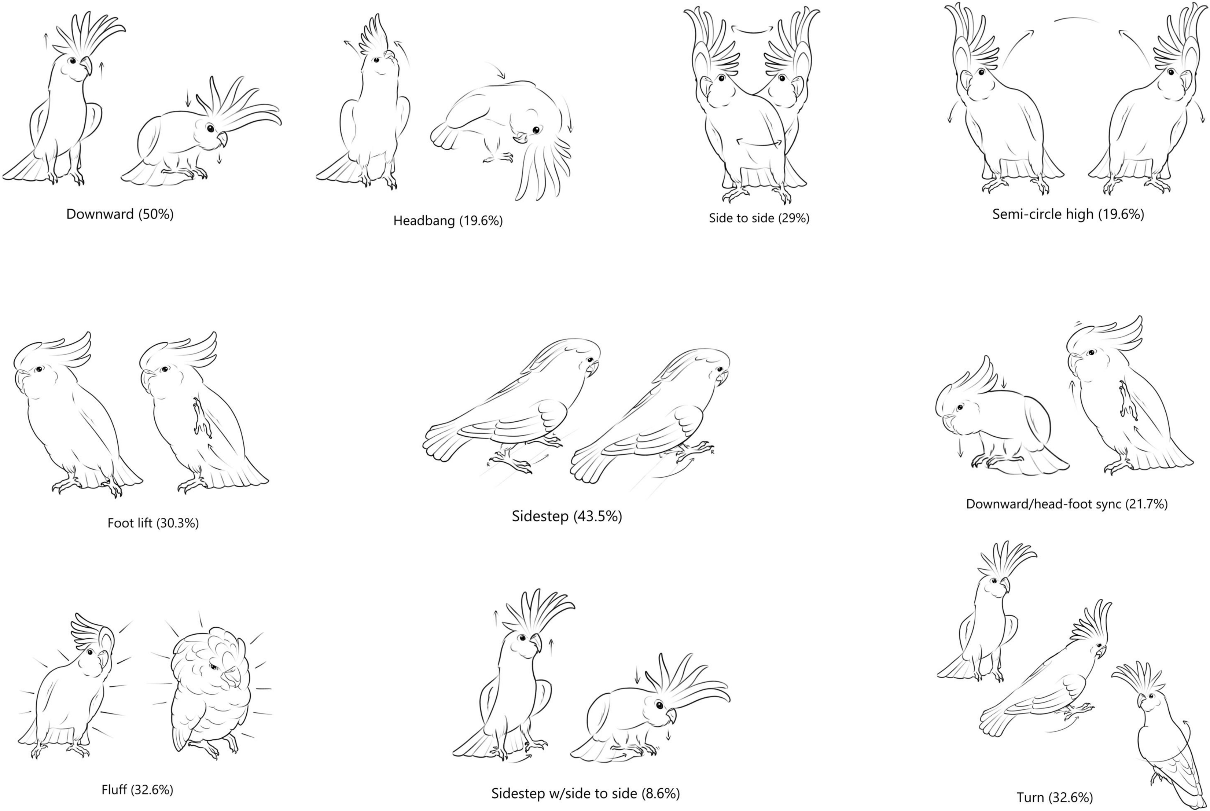Cockatoos have at least 30 dance moves they love to show off, and while not every species has been spotted making every move, some individuals combine moves in ways others don’t to create further metamoves. The purpose of the dancing is unknown, because while it may have evolved from courtship, it now occurs far more widely.
Cockatoos, composed of 21 species of Australian and South-East Asian parrots, are such popular pets that they may have even been used in Medieval peace negotiations. They sometimes appear to dance to their own internal beat, and recently, some owners have taken to playing them music and filming as they dance in time.
Natasha Lubke of Charles Sturt University studied 45 of these videos to categorize the birds’ moves, and followed up by playing music and a non-musical podcast to six birds at Wagga Wagga Zoo. Lubke and co-authors report that dancing is not a trait restricted to the most popular captive species, let alone birds whose owners have encouraged them to cut the rug.
Many mating displays put on by male birds are referred to as dances. Some are remarkably elaborate, and even T-rexes may have done the same thing. However, while these often involve exceptionally complex choreography, in some cases coordinated with back-up dancers of younger males not yet ready to mate, only parrots are known to use external rhythms. Male palm cockatoos even make their own drumsticks to make a beat for them to sing and dance to.
Previous studies identified 16 distinct moves performed by a sulphur-crested cockatoo named Snowball and others, with indications that dancing is a sign of cockatoo wellbeing. By expanding the sample size, Lubke and co-authors found at least nine cockatoo species dance, although for some, clips were insufficient for further analysis.
Three of the previously identified dance moves were not seen either in videos or among the zoo birds, including one delightfully named “the headbang with lifted foot” – perhaps they’ve gone out of style. However, 17 new moves were recorded. It doesn’t appear the lost moves reflect insufficient metal music, as an unaccompanied headbang was among the more popular moves Lubke and co-authors report. They also found that some birds combined a few moves in ways not yet seen among other individuals to make 17 idiosyncratic dances.

Ten of the 30 dance moves cockatoos have been seen displaying in viral social media posts or at Wagga Wagga Zoo, and the names scientists have given them, as well as the frequency with which they were performed.
Some species favor particular moves, but the species with the most in common dance-wise were not those most closely related.
Many dance moves resemble those used by male birds of the same species for courtship. However, they were performed when no potential mate, or even human, was present, and by female birds, so more than mating behavior is going on. Indeed, as one popular video shows, some will do it so enthusiastically that they may be undermining their mating prospects.
The same part of the forebrain that enables the synchronization of body movement to a rhythm also controls vocal learning, leading to speculation that they are connected. However, the authors note that while vocal mimicry exists across many families of birds and mammals, only humans and parrots are known to respond to musical rhythm.
One thing the authors are confident about is that cockatoos’ dancing capacities demonstrate intelligence, which in turn makes it important to keep them intellectually stimulated in captivity. Although the zoo birds were not significantly more inclined to dance to Avicii than the podcast or silence, senior author Professor Rafael Freire said in a statement: “The similarities with human dancing make it hard to argue against well-developed cognitive and emotional processes in parrots, and playing music to parrots may improve their welfare. Further research would be beneficial to determine if music can trigger dance in captive birds and serve as a form of environmental enrichment.”
The study is published in PLOS One.
Source Link: Cockatoos Love To Dance, Showing Off 30 Different Moves That Some Combine In Unique Ways